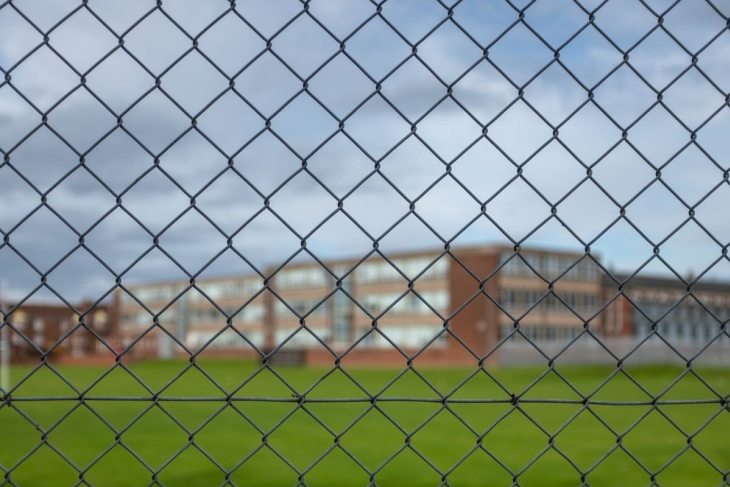This is the fifth in a series on doing educational equity right. See the introductory post, as well as ones on school finance, student discipline, advanced education, homework, grading, effective teachers, and a concluding post on doing educational equity wrong.
At the center of the modern framing around “educational equity” is the reality of racial and class disparities in virtually every aspect of the American school system. The “good stuff” disproportionately flows to White, Asian, and rich students (school funding, advanced education, high-quality career-tech opportunities) while the “bad stuff” disproportionately goes to Black, Hispanic, and poor students (exclusionary discipline, grade retention, special education identification).
One theme of this series on doing educational equity right is that we should work harder and smarter to make sure that more of the good stuff does indeed flow to Black, Hispanic, and poor students—by, for example, making our school funding system more progressive and using universal screening to identify more such students who could benefit from advanced education. I’ve also urged that we work harder and smarter to make sure less of the bad stuff goes to them, by, for example, finding alternatives to suspensions and expulsions while also reducing disorder in the classroom.
But another theme we must tackle is that sometimes what is seen as “bad stuff” isn’t actually so bad. Discipline is one example. To be sure, loads of studies link out-of-school suspensions with negative outcomes for affected students. We should declare that practice ineffective. But disciplining students can still be a good thing if it results in better behavior—in helping students learn how to comport themselves in a classroom setting, setting them up for future success, while (of course) also helping create classroom environments in which teachers can function and other needy kids can successfully learn.
Likewise with special-education placement. The conventional wisdom is that Black students are overidentified for special ed, and that label comes with stigma and lower expectations. That’s certainly been true at some times and places. But newer research indicates that Black students are actually underrepresented, at least in some special-ed categories such as “specific learning disabilities.” Were these students to be identified correctly and early, they would be eligible (legally entitled, really) to receive services to address their learning needs. Seen this way, being identified as a student with a disability isn’t necessarily “bad.”
Same with retaining students, especially those who reach the end of third grade but still can’t read (a topic we’ll cover in the weeks ahead). If mandatory retention policies mean that these students finally get the interventions they need (and should have had), research indicates that a second year of third grade can be a valuable investment.
It is in that spirit that we now tackle school closures—not the temporary pandemic-era variety but the permanent shuttering of under-enrolled school facilities. Here, too, the conventional wisdom is that closures are bad—and that’s surely how parents and community members see them. Nobody wants to hear that the school board (or charter authorizer) is going to close “their” school, especially when the “they” always seem to be Black, brown, and poor neighborhoods.
So it’s little surprise that district leaders facing school closure decisions are under pressure to proceed equitably. Fair enough. But what should that mean? And what if school closures, though painful, can be made to be good—for students, at least? Let’s dig in.
America has too many school buildings, and some will need to close
This issue has been all over the media of late. In short: Our schools are facing a dramatic enrollment decline driven mostly by the post-Great Recession Baby Bust, but also Trump- and pandemic-era declines in immigration. Some traditional public schools also lost students to charter or private schools during the Covid crisis, and not all came back. And some urban systems lost families to the suburbs (or to more distant environs) as the rise of remote work made urban living less attractive.
The recent surge across the southern border is blurring the picture a bit, but most school systems face long-term enrollment declines of ten percent or more—not surprising given that the number of babies born in the U.S. in a given year has dropped more than 15 percent since its 2007 high. In some districts it will be much worse—experts are predicting a decline of 30 percent for LAUSD!
I haven’t seen any demographers asserting that America’s birth rate is likely to bounce back anytime soon, if ever. In fact, as is the case for most of the developed world, it’s still heading down . Nor does there appear to be a national appetite for a large increase in immigration. All of which is to say that, outside of a handful of high-growth communities, districts must come to terms with shrinking enrollment for the foreseeable future. And that means closing schools.
The evidence on closures
Do students suffer when their schools are closed—either for low performance, as occasionally happened in the No Child Left Behind era, or for under-enrollment? This is a question that has been studied extensively over the past few decades, and the somewhat exasperating answer is: It depends. Specifically, it depends on whether the affected students land in higher-performing schools. If so, they tend to do better, at least in the long run. If not, they do worse. (That’s the case for charter school closures, as well.)
There’s also better-than-expected news for affected communities. While local residents understandably worry that a shuttered school will signal (continued) decline in their neighborhood, at least one study in Philadelphia found that crime, especially violent crime, declined significantly when high schools with high rates of student misbehavior and low academic performance were closed.
Closing schools equitably
So what should the equity-minded school board member or superintendent do, in the face of this challenging and fraught situation?
Rather than promise that school closures won’t disproportionately affect low-income communities or communities of color, promise that all affected students will have access to higher-performing schools.
In other words, promise that, by closing schools, students will be better off than they are now, especially low-income students and students of color.
No doubt, keeping that promise will take considerable effort. It will mean:
- Identifying the right schools to close—generally meaning the lowest performing ones, those whose students are achieving at extremely low levels and aren’t making much progress from year to year.
- Ensuring an adequate number of seats in higher-performing schools nearby[1], while working out any transition or transportation logistics that might keep students from accessing them. That might include enrollment preferences for displaced students, including in nearby charter schools.
- Communicating effectively (and promptly) with students, families, educators, and the community, both about the process of identifying schools for closure and about how to ensure that students enroll in higher-performing schools. Tim Daly has lots of great suggestions on this front.
Closing schools is a wrenching process but ensuring that our most disadvantaged students land in more effective environments than they attend today is more than a silver lining. It should be the overriding goal, one that can narrow achievement gaps if done right. That’s real equity.
[1] For sure, this could be a HUGE lift if wide swaths of districts are full of nothing but extremely low-performing schools. But even if the not-closed schools are only marginally better than the closed ones, students should still benefit.









